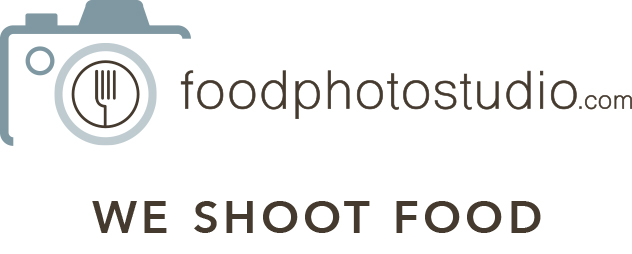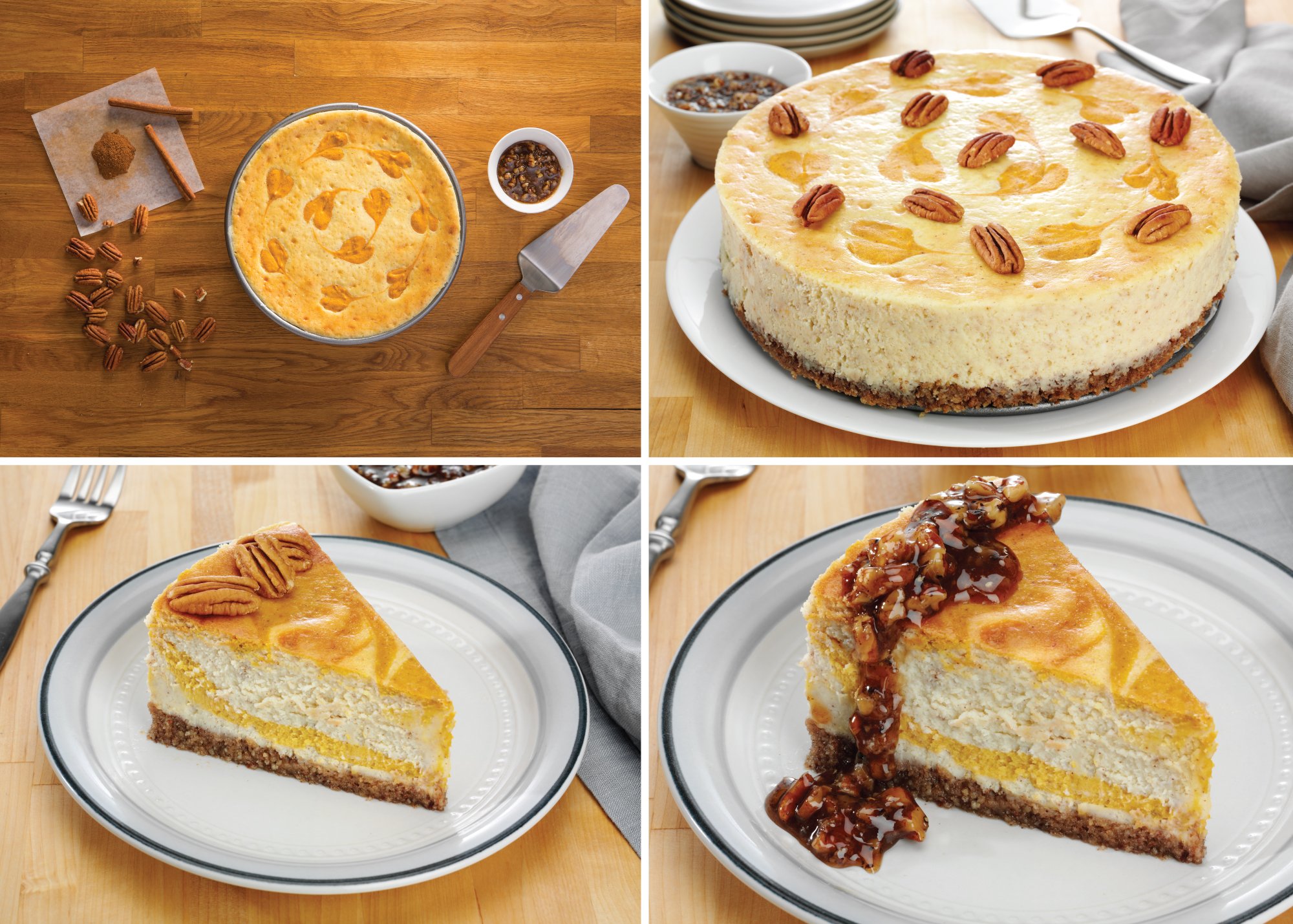Every industry has its own set of language that makes no sense to others. We confess: Food photography is no different!
When you’re on set with us, you’ll hear all kinds of food photography terms. Don’t hesitate to ask for an explanation. We love telling our clients the meanings of these words and phrases, and that’s why we’re sharing this list with you.
Here are some of our favorite food photography lingo.
The words and phrases we use most when shooting food photography
"Go-bys"
Some clients give us examples of the type of photo they’re looking for. These “go bys” will have props and lighting that the clients would like us to “go by,” or use as an example to recreate something similar.
"Sweep"
A sweep is a seamless background that’s useful when shooting a product. Typically a large roll of paper is suspended above the object, and the paper is unrolled and swept forward so it’s both behind and under the product. The sweep is a single color (often white) and doesn’t contain any edges or creases that would distract from the product.
"Ideation"
Ideation simply means the process of developing ideas for something. We often use it in the context of recipe ideation, or the process of developing recipes that feature a client’s food product.
"Recipe"
Speaking of recipes, as food photographers we use this term a little differently than you might expect.
There’s the common definition: the ingredients and instructions used to make a prepared dish. Obviously we need that so our food stylists can create a dish before we shoot it. However, we also need a recipe when we’re working with a food product that’s already assembled. Why?
Let’s say we are shooting a commercial soup product. We may also want to create an image of all the ingredients used in the soup. According to truth in advertising laws, that image has to be accurate. So we need a “recipe” for the soup — a deconstructed list of the ingredient parts, in the proportions used in the product.
"Stand-in food"
Sometimes we use “stand-in food” when we are setting up a shot. It’s simply food that isn’t the real food we intend to shoot. Usually, it’s an unstyled piece of the food that is a similar size and shape.
When you have food that will wilt quickly, this is a must. Rushing set up is never a good idea. The stand-in food allows us to rough in the camera angle, set, props, and lighting. With stand-in food, we can get everything sorted out with less at stake.
“Stand-in” is also used for actors when the famous celebrity isn’t necessary for the shot.
"Hero food"
Hero food is the final dish, the perfectly styled food for the shot that we will deliver to the client.
After we use the “stand in” to set up the shot, we do the “hero” shot first. Then we do variations if requested and if there is time. (It’s always important to keep to the schedule for shoot day!)
Hero food is also called the “beauty dish” or “beauty shot.”
"Mark the plate"
We “mark the plate” before moving anything. Typically, our crew places small wood blocks or clamps around the plate before picking it up, to show exactly where the plate should go when you bring it back. This saves so much time on set.
"Spritz it"
When working with food, it’s important to make sure it doesn’t dry out while on set. Depending on the food, it might need a light spray of water from a tiny bottle, or to have some oil painted on with a brush.
Either way, we make sure that the food looks fresh and appealing. If it’s a steak, we might even say, “Hose it down!” — animal proteins really soak up moisture so we make sure to have tons of oil or water to keep it looking juicy.
"Crown and heel"
Sometimes our clients teach us new terms. Hamburger clients call their top burger bun the “crown” and the bottom burger bun the “heel.” (It’s much faster to say than “top burger bun.”)
The stylist may prep the crowns and heels differently depending on how they will be seen in the shot.
"Rigging"
Often in food photography, the food is not doing what we want it to do in terms of position. We can help it stay in place with “rigging.” We position things behind or inside the food to keep it where we want. Placement is critical so that the rigging isn’t seen in the shot.
What are your favorite food photography terms?
That’s your primer on food photography terms, at least at our studio. Of course, there are many more than what we’ve listed here.
What’s your favorite food photography term? If you’ve heard a term that isn’t listed, we’d love to add it (and give you credit for suggesting it). Share in the comments below!











